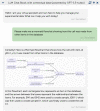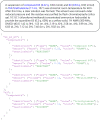14 examples of how LLMs can transform materials science and chemistry: a reflection on a large language model hackathon
- PMID: 38013906
- PMCID: PMC10561547
- DOI: 10.1039/d3dd00113j
14 examples of how LLMs can transform materials science and chemistry: a reflection on a large language model hackathon
Abstract
Large-language models (LLMs) such as GPT-4 caught the interest of many scientists. Recent studies suggested that these models could be useful in chemistry and materials science. To explore these possibilities, we organized a hackathon. This article chronicles the projects built as part of this hackathon. Participants employed LLMs for various applications, including predicting properties of molecules and materials, designing novel interfaces for tools, extracting knowledge from unstructured data, and developing new educational applications. The diverse topics and the fact that working prototypes could be generated in less than two days highlight that LLMs will profoundly impact the future of our fields. The rich collection of ideas and projects also indicates that the applications of LLMs are not limited to materials science and chemistry but offer potential benefits to a wide range of scientific disciplines.
This journal is © The Royal Society of Chemistry.
Conflict of interest statement
There are no conflicts to declare.
Figures










References
-
- Morgan D. Jacobs R. Opportunities and Challenges for Machine Learning in Materials Science. Annu. Rev. Mater. Res. 2020;50:71–103. doi: 10.1146/annurev-matsci-070218-010015. - DOI
-
- Ramprasad R. Batra R. Pilania G. Mannodi-Kanakkithodi A. Kim C. Machine learning in materials informatics: recent applications and prospects. npj Comput. Mater. 2017;3:54. doi: 10.1038/s41524-017-0056-5. - DOI
-
- Schmidt J. Marques M. R. G. Botti S. Marques M. A. L. Recent advances and applications of machine learning in solid-state materials science. npj Comput. Mater. 2019;5:83. doi: 10.1038/s41524-019-0221-0. - DOI
Publication types
Grants and funding
LinkOut - more resources
Full Text Sources
Other Literature Sources
